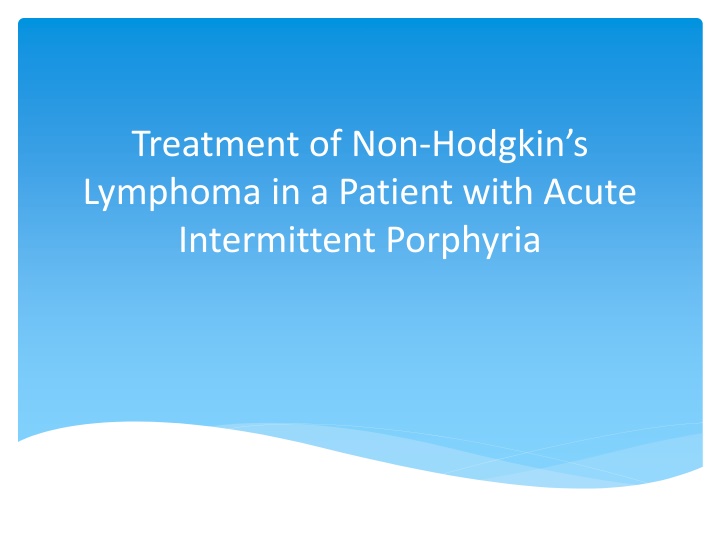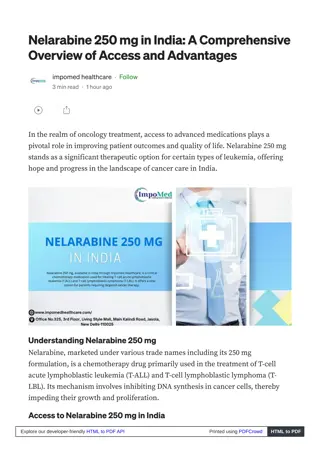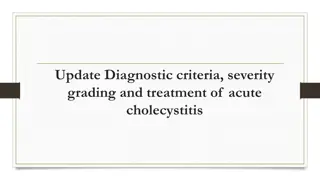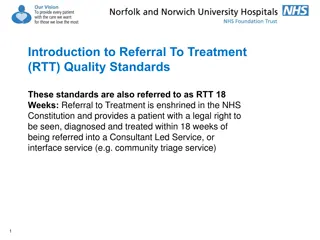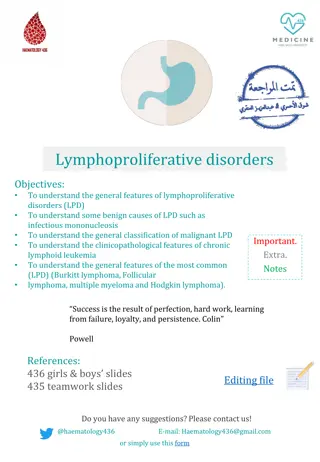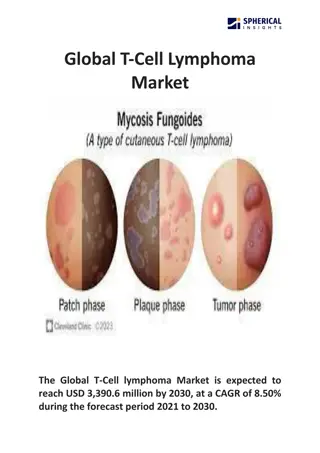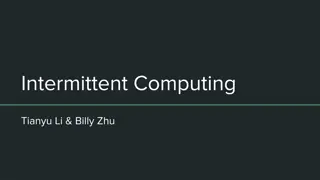Treatment of Non-Hodgkins Lymphoma in a Patient with Acute Intermittent Porphyria
A patient diagnosed with low-grade follicular lymphoma underwent various tests including ultrasound, CT scans, and PET scans to determine the extent of the disease. Despite a history of acute intermittent porphyria, the patient's past medical history included hypertension, renal function issues, and vitamin D deficiency. Family history revealed a pattern of cardiovascular diseases. Treatment options for Non-Hodgkins Lymphoma were explored considering the patient's unique medical background.
Download Presentation

Please find below an Image/Link to download the presentation.
The content on the website is provided AS IS for your information and personal use only. It may not be sold, licensed, or shared on other websites without obtaining consent from the author.If you encounter any issues during the download, it is possible that the publisher has removed the file from their server.
You are allowed to download the files provided on this website for personal or commercial use, subject to the condition that they are used lawfully. All files are the property of their respective owners.
The content on the website is provided AS IS for your information and personal use only. It may not be sold, licensed, or shared on other websites without obtaining consent from the author.
E N D
Presentation Transcript
Treatment of Non-Hodgkins Lymphoma in a Patient with Acute Intermittent Porphyria
History Noticed lump in right groin (Sept 2014) Painless Nil inflammation or discolourations Nil associated symptoms U/S guided core biopsy with GP (Oct 2014) 17x13x21mm lymph node, slightly hypervascular Microscopic examination showed features suggestive of low grade follicular lymphoma; nil evidence of metastatic disease
History CT brain, chest, abdo & pelvis Non-contrast due to poor renal function Pathologically enlarged right inguinal lymph node, no other lymphadenopathy No hepatosplenomegaly
Work-up PET scan (Nov 2014) Avid lymph nodes in coeliac axis Nil distant or extra-lymphatic metastasis Stage II follicular B cell lymphoma below diaphragm BMAT : infiltration with low volume lymphoma
Past medical history Acute intermittent porphyria history of three attacks; asymptomatic past 10 years CKI 2010 Cr 119, eGFR 46 Hypertension on candesartan GORD oesophagitis visualised on recent PET scan Vitamin D deficiency Pap smear in March 2013 showed low grade changes
History First episode in 2000 Generalised abdominal cramps Stabbing pain, relieved by movement Believed to be triggered by floor board polish?? Urine sample turned red overnight Hospitalised initially thought to be constipation/bowel obstruction Mx pethidine and suppository Porphyria diagnosis heme arginate (thrombophlebitis)
History Second episode in 2003 Triggered by homeopathic agents Third episode in 2005 Triggered by naturopathic agents No acute episodes since
Family history No family history of cancers Strong family history of CVA/IHD Mother CVA and IHD, passed away from STEMI Uncle CVA and IHD, triple CABG Maternal grandmother CVA and IHD
Social history Home alone with dog Myotherapist and educator Well supported by extended family
Management Chemotherapy R-CHOP 4 cycles Followed by maintenance Mabthera
Discussion: Porphyria and Drug Interactions
Porphyria Porphyria are a group of metabolic disorders caused by altered enzyme activities within the heme synthesis pathway, due to inherited genetic mutation1 Heme production Bone marrow (~80%) prosthetic group for haemoglobin Liver (~20%) production of cytochrome P450 enzymes Others (<1%)
Porphyria and Drug Interaction Medication is one of the most important exacerbating factors for porphyria (especially acute intermittent porphyria) Build-up of neuro-toxic porphyrin (any of the heme pathway intermediates) due to upregulation of the heme pathway
Porphyria and Drug Interaction Exacerbation of porphyrin can be caused by Induction of Cytochrome P450 enzymes (CYP s) Superfamily of hemoprotein commonly involved in drug metabolism2 Induction of hepatic delta-aminolevulinic acid synthetase- 1 (ALAS1) Rate-limiting enzyme in the heme synthesis pathway3 Transactivation of Pregnane X receptor Induces CYP3A4 in presence of foreign toxic substance4
Implicated Chemotherapeutic Agents Likely unsafe; consistent evidence Busulfan Procabazine Flutamide Megestrol Chlorambucil Lomustine Possibly unsafe; inconclusive evidence Tamoxifen Etoposide Paclitaxel Topotecan Ironotecan Idarubicin Mitomycin Mitoxantrone Letrozole Estramustine Dacarbazine Ixabepilone Vinblastine Vinorelbine Ifosfamide *According to American Porphyria Foundation database
